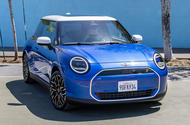Wider track, shorter overhangs and larger wheels give the new Mini hatchback a purposeful stance
Hatchback’s minimalist cabin is inspired by the original Mini; speedometer swapped for touchscreen
Mini is returning to its roots with a simple, retro-futuristic cabin arrangement for its 2024 Cooper EV – inspired by Alec Issigonis’s design for the original 1959 car.
Revealed ahead of the car’s official debut in the coming months, the new Mini’s cockpit is described as “more Mini than ever before” – and the firm has revealed the electric supermini will receive an exhaust note and eight different drive modes.
Using Mini’s new ninth-generation operating system, which the firm says has been optimised for touch and voice controls, the new model will feature a new ‘Mini Experience’ feature with various drive modes to adjust the car’s system’s colour theme, driving characteristics and interior lighting.
Mini claims one mode, Balance, is based on noises from a forest at either day or night. It features a rippling stream, crickets and rustling wind.
Listen to the new Balance mode below…
The new Mini Cooper EV electric supermini will feature eight different ‘Mini Experience’ modes, including Balance – a mode based on noises from a forestWould you use this ‘Experience’ mode? pic.twitter.com/RhoSbp9eHY
— Autocar (@autocar) July 27, 2023
Another mode, dubbed ‘Go-kart’ mode, drapes the Mini’s interior with black and red, visually swapping the car’s head-up display with a speedometer, optimising the car’s throttle response for more dynamic driving.
Meanwhile, ‘Timeless’ mode mimics the exhaust note of internal combustion Minis, samples together into what Mini describes as a “futuristic interpretation of the Mini”, and an “acoustic journey through time”.
Another, ‘Vivid’, sees the car’s ambient lighting colour auto-sync with the album art of any song being played and project those colours across the cabin. Other modes include ‘Trail’, ‘Core’ and ‘Green,’ which transforms the interior lighting to green, while optimising the accelerator pedal for more economical driving.
Match your vibe to your drive with the new #MINIExperienceModes – coming soon in #TheNewMINIFamily.#MINI #BIGLOVE #MINIDigitalExperience pic.twitter.com/N32ESd9JFI
— MINI (@MINI) August 3, 2023
The centrepiece of the redesigned interior is an expansive central touchscreen, modelled on the trademark central speedometer that has featured in every Mini hatch since the original Austin Seven.
It’s the first round OLED display ever fitted to a car, Mini says, measuring 240mm (9.4in) in diameter and capable of hosting eye-catching new graphics and motifs, with a totally new and largely bespoke infotainment interface.
Unusually, this new system will not be paired with a digital gauge cluster, instead featuring a simpler head-up display for critical information such as speed and directions. Elsewhere, an optional light projector can coat the dashboard in colour, depending on which mode is selected.
It runs Mini’s new ninth-generation operating system, which the firm says has been optimised for touch and voice controls, and an optional light projector can coat the dashboard in colour, depending on which mode is selected.
The new Mini will also offer 5G compatibility, a digital key option and remote software upgrades, in addition to a digital store with access to games, video and music streaming applications.
Elsewhere, it’s a case of tradition meeting innovation, with distinctive LED lighting patterns integrated into the knitted dashboard, but a familiar panel of toggle switches retained for climate control functions.
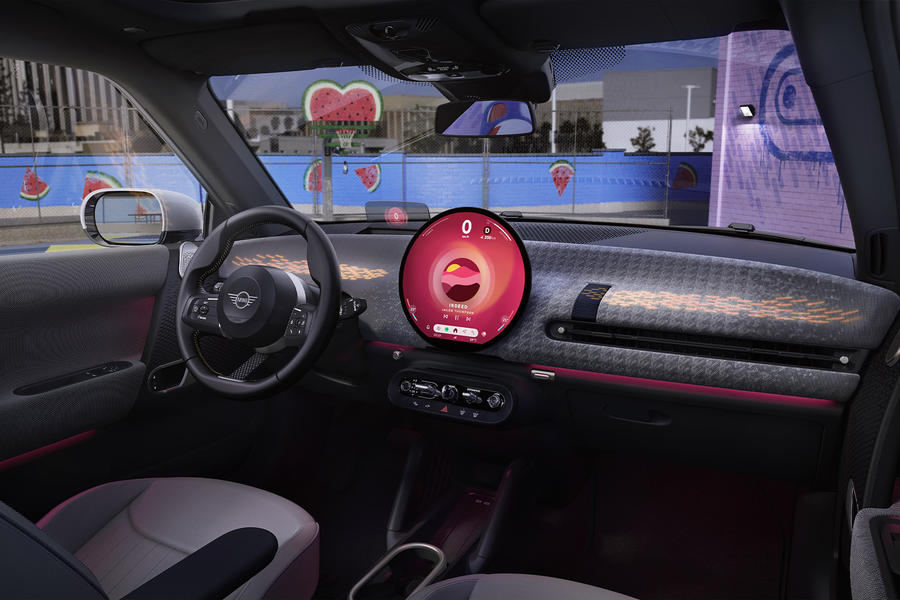
Drive selection is now handled by a lever behind the steering wheel – itself now smaller and “sportier”, but still hosting physical controls – with the new-look, low-set centre console given over to a pair of cupholders, two USB-C charging ports and a generous storage cubby.
Mini says the “immersive” interior, complete with a raft of new animations, sounds and projections, makes the Mini “your digital partner in crime” and making the cabin more minimalist allows “more creative space for digital interaction and new, digitally amplified experiences”.
The second generation of Mini’s small EV – now called the Cooper – will be built in China atop a new front-wheel-drive platform engineered by Spotlight Automotive, BMW’s joint venture with Great Wall.
A petrol-engined version evolved more obviously from the current car, will be built in Oxford, sitting on an entirely different platform but taking the same design direction. Autocar has already reported in-depth details of the long-awaited 2024 Cooper, following a briefing from Mini boss Stefanie Wurst and a prototype ride in Sweden.
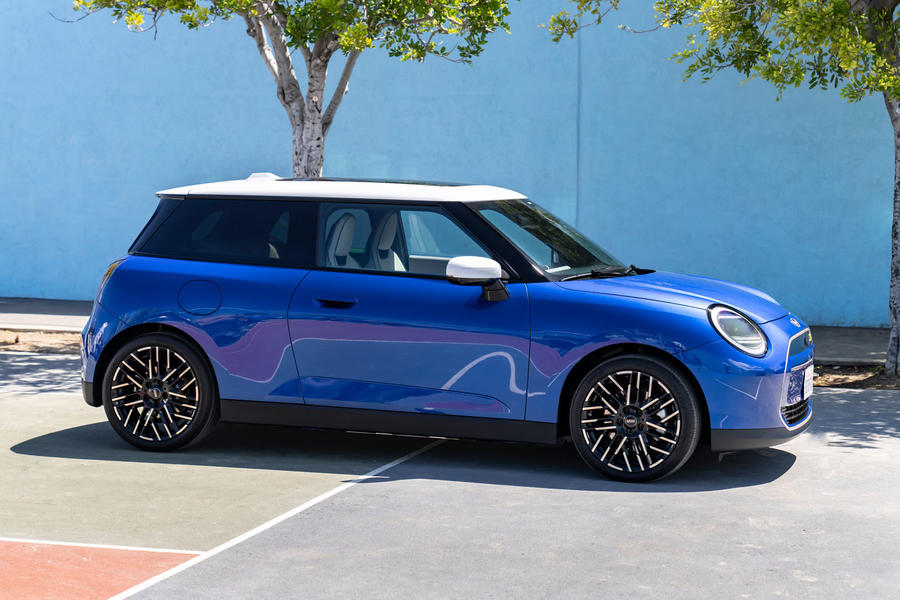
The resemblance to today’s car is evident, and indeed it still measures roughly 3800mm from bumper to bumper, but it’s clear Mini’s designers have worked hard to make good on a promise to bring “the iconic hatch back to its roots”.
Read more: best small electric cars UK
A wider track, shorter overhangs, a longer wheelbase and larger wheels give the Fiat 500 rival a noticeably more purposeful stance, while the company’s vocal commitment to minimalism (and thereby sustainability) extends to a much purer and simpler overall treatment.
Gone are the chunky black plastic wheel-arch claddings, clamshell bonnet, contrasting trim accents and chrome headlight surrounds of today’s Mini Electric in favour of a fresh look majoring more on function than fashion.
Wurst recently gave Autocar some insight into why the car was being reinvented with less of an overt ‘premium’ focus: “I think Mini in away is a very modern and contemporary product. It isn’t about being big or premium. It’s about a certain lifestyle that you have. You take things more easily. You’re not tense about what your income status is, what kind of hierarchy level you work at. It’s more a state of mind.”
The electric Cooper is due on sale in May 2024, followed about two months later by the petrol Cooper.
The new EV will match the current Electric’s 181bhp and is expected to get from 0-62mph in roughly 7.0sec. That would make it nearly as quick as today’s petrol-engined Cooper S hot hatch and, more importantly, a close rival to the new Abarth 500e.
But that won’t be the quickest EV: a warmed-up Cooper SE is in the pipeline with 215bhp, promising to serve as a contender for supremacy in the nascent electric hot hatch segment. And that will eventually be eclipsed by a John Cooper Works variant, thought to muster around 250bhp.
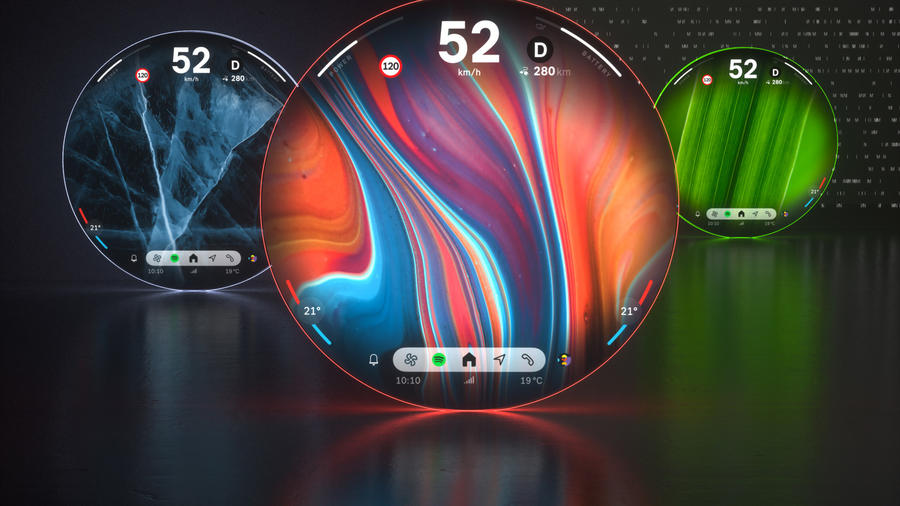
The electric Cooper will use a 40kWh battery for a claimed range of 240 miles (up on just 150 miles in today’s Electric), while the Cooper SE will use a 54kWh pack to push closer to 300 miles.
Mini has yet to confirm how quickly the electric Cooper will charge, or how the battery is arranged within the platform.
The petrol Cooper – basically a heavily updated and rebodied version of the hatchback that has been on sale since 2014 – is expected to use fettled versions of today’s turbo engines (a 1.5-litre triple in the Cooper and a 2.0-litre four-pot in the Cooper S) with commensurate improvements in efficiency and performance.
Detailed specifications won’t be shared until closer to launch, but we expect the electric Cooper to start some way above £30,000, given that the Electric already costs from £32,550.
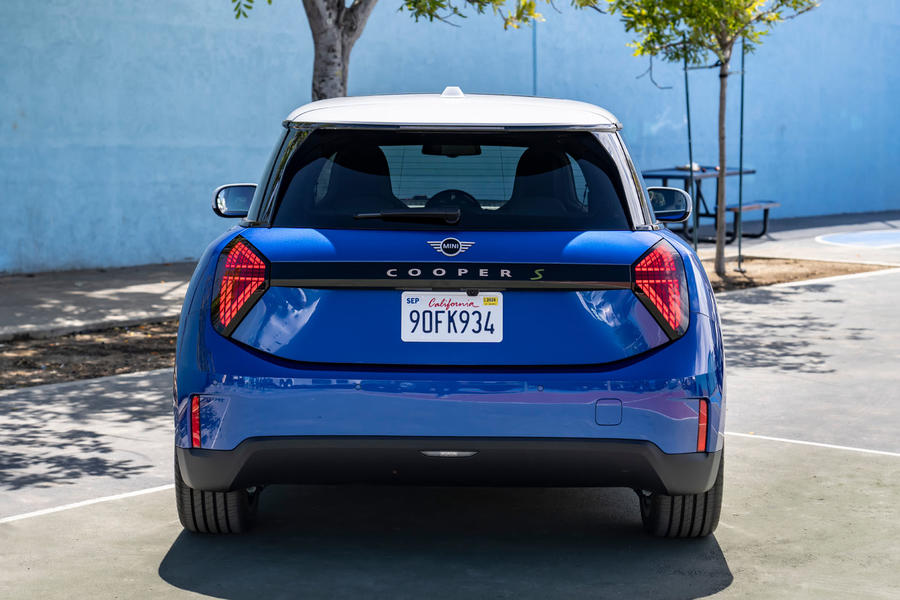
Its closest rival, the Fiat 500 EV, opens at £28,195 currently, but that’s with a 24kWh battery and a range of only 118 miles.
From launch, the Cooper line-up will comprise just a three-door hatchback with the choice of a petrol or an electric powertrain.
The five-door hatchback will be indirectly replaced next year by the similarly long but higher riding, electric-only Aceman. A replacement Convertible is also in the works, but this isn’t expected before 2025.
Source: Autocar
